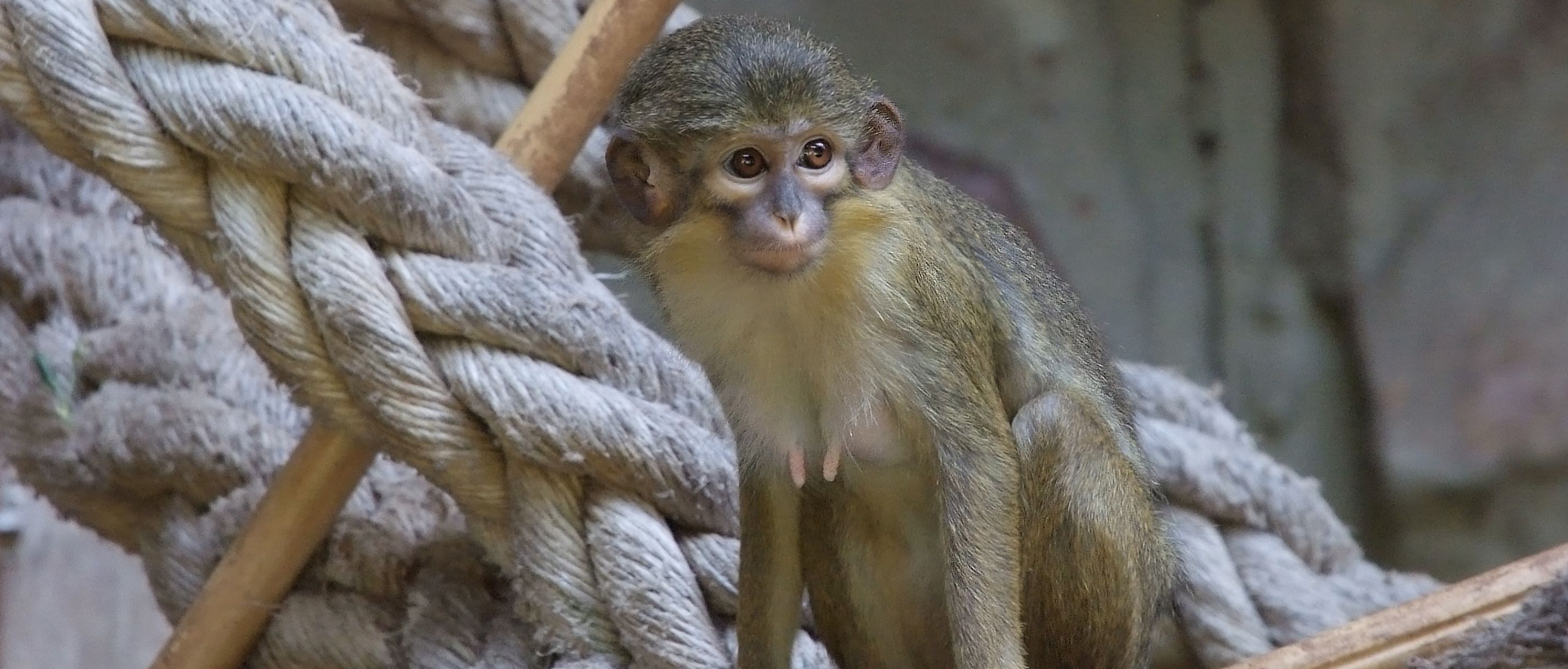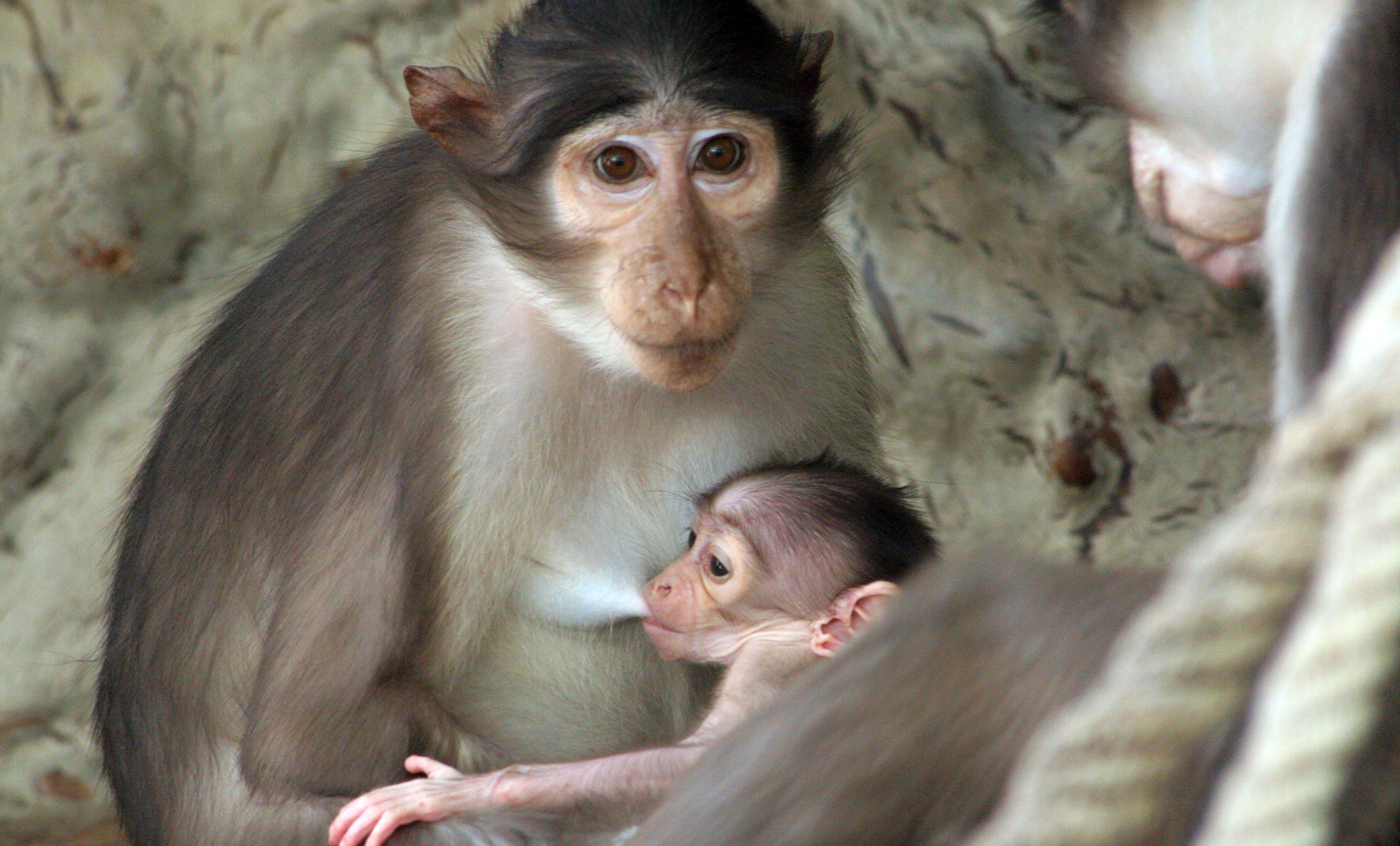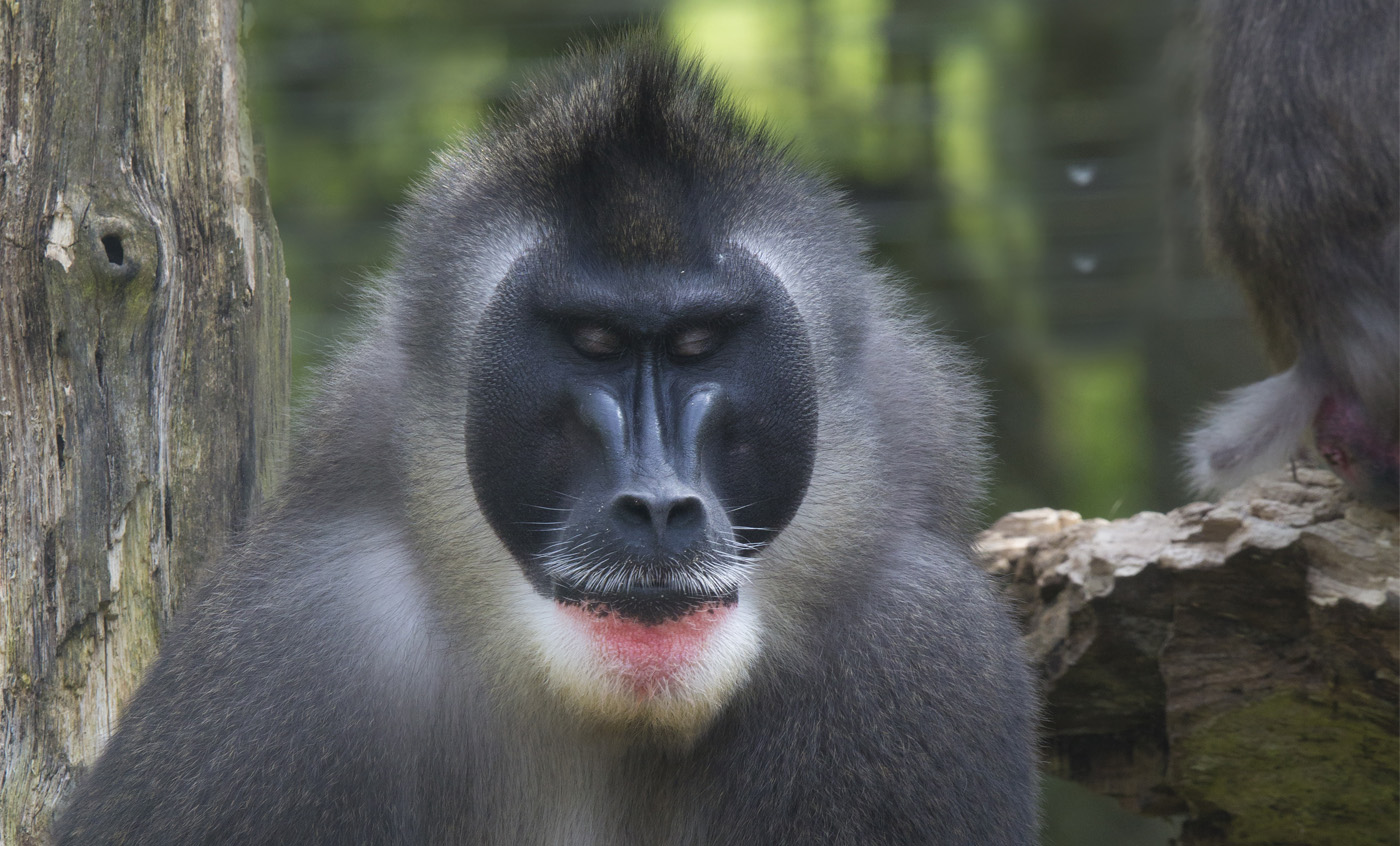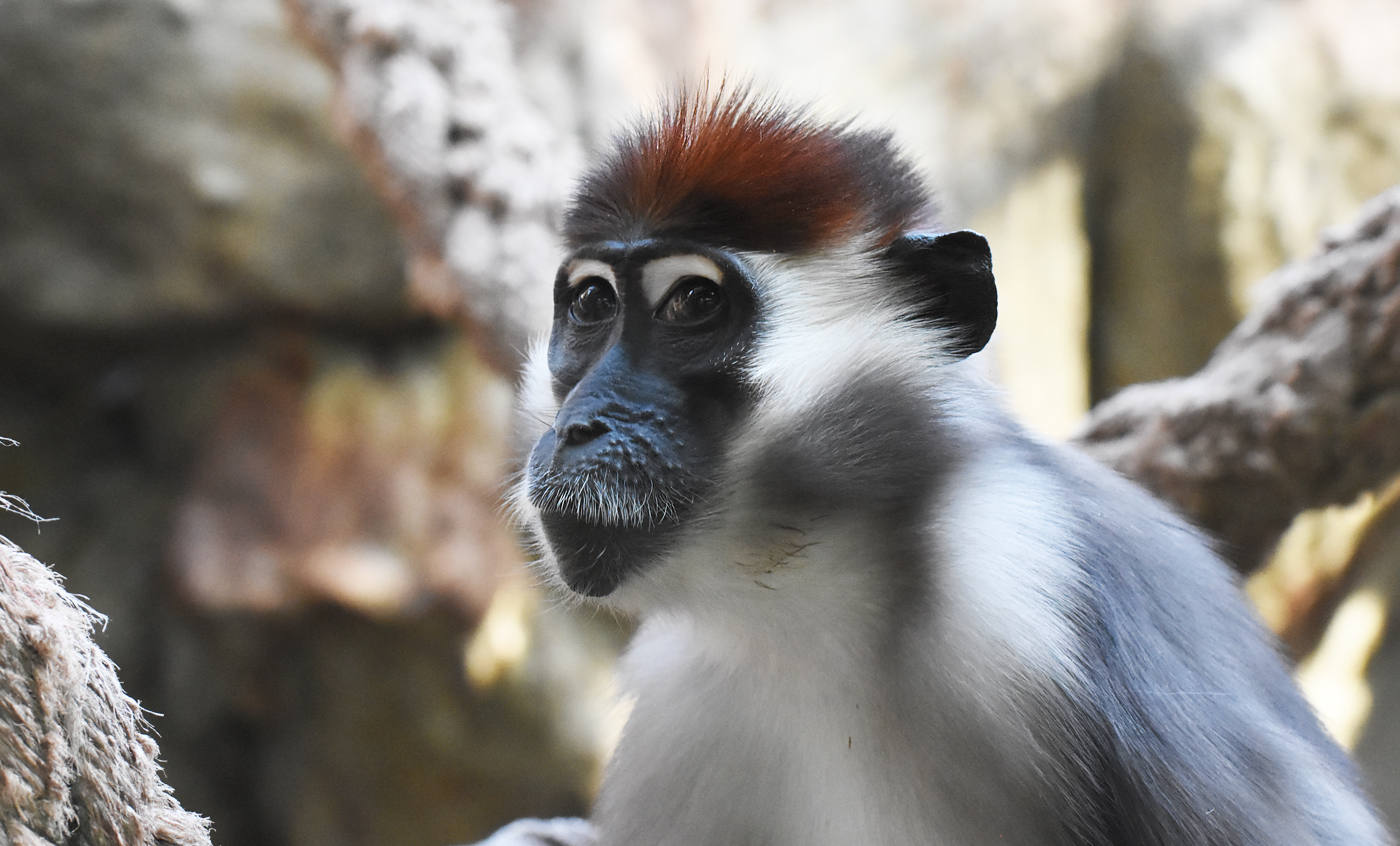Northern talapoin monkey
Talapoins are the smallest guenon of the African continent. They can live in groups of up to one hundred individuals, although they normally gather in family groups of fifteen members. They are completely arboreal and occupy the lower stratum of trees.
They live in the rainforests of lowland swamps, mangroves and estuaries. They are very skilled swimmers and are able to dive, while looking for food. They eat fruit, seeds, insects and small vertebrates.
Natural habit
From southern Cameroon until the Democratic Republic of the Congo and Angola.
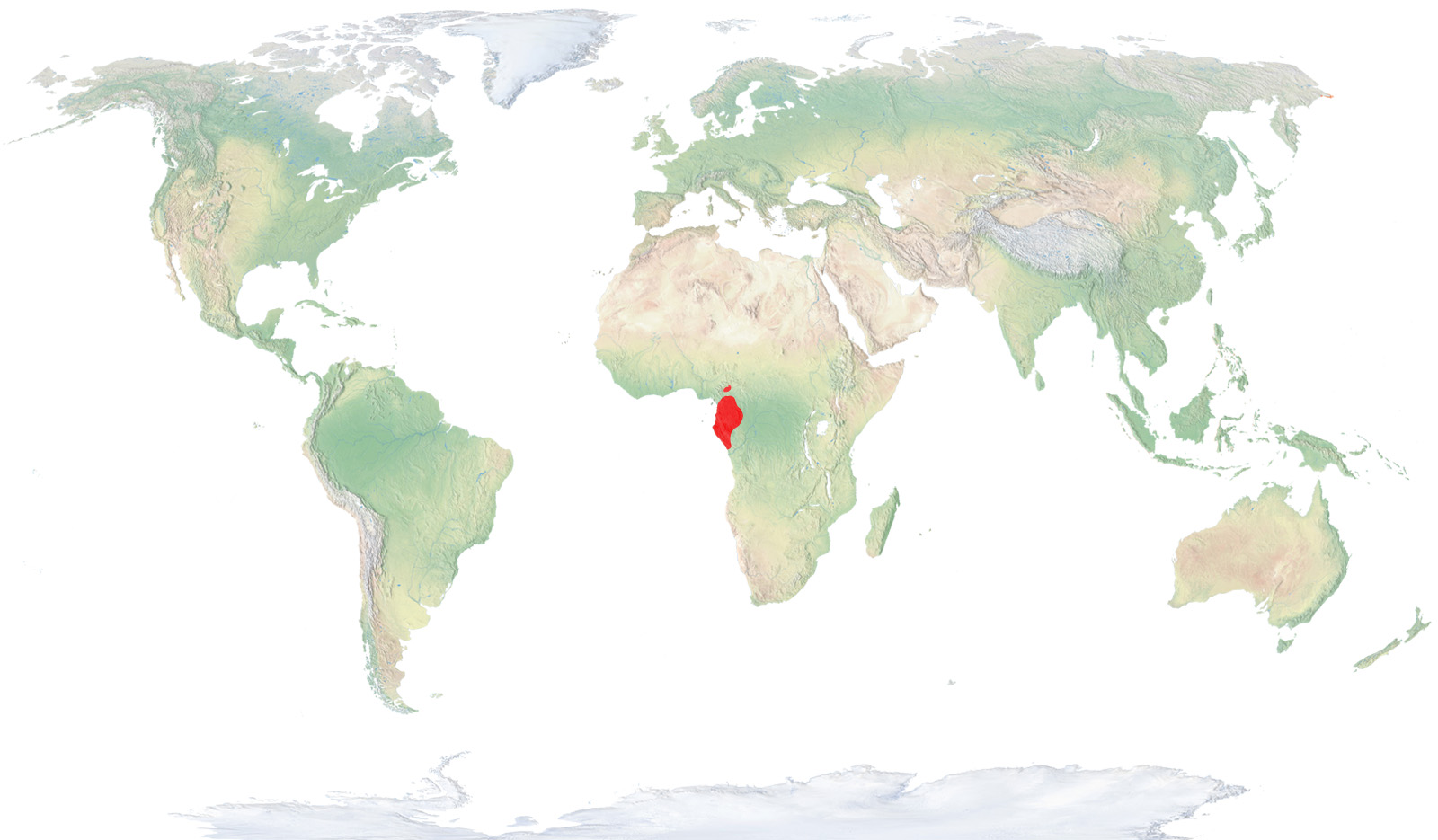
- Distribution / Resident
- Breeding
- Wintering
- Subspecies
Risk level
- Extint
- Extint in the wild
- Critically endangered
- In Danger
- Vulnerable
- Near threatened
- Minor concern
- Insufficient data
- Not evaluated
Taxonomy
Physical characteristics
Biology
Reproduction
Biology
It is a small-sized guenon, with an olive hue on the back and white underpart. It can be distinguished from the other talapoin species, the southern talapoin, in its small yellowish beard and by its flesh-coloured ears and face.
Lowland rainforests, swamp forests, mangroves and estuaries of the rainforest of western Africa.
Its diet is omnivorous, and feeds on fruits, seeds, insects and small vertebrates.
Its reproduction is strictly seasonal, for copulations always occur during the dry season and births take place after five or six months.
It lives in big groups of up to one hundred individuals, among which there are several adult males, although it usually gathers in families of fifteen individuals approximately. It has arboreal and diurnal habits, and occupies the lower stratum of trees. It forms subgroups of the same sex to feed. At dusk, it hides among the bushes, where it sleeps in groups of three or four. It is one of the quietest monkeys, as the only sound it makes is a whistle in case of alarm.
Unlike most primates, it is a skilled swimmer in swamp areas and can dive underwater in search of food.
It is a species that is still quite common in a great part of its distribution area and to whom human presence is favourable, as it can take advantage of food resources that crops or garden areas offer.
At the Zoo of Barcelona there is one of the few reproductive groups of this species in all Europe.



